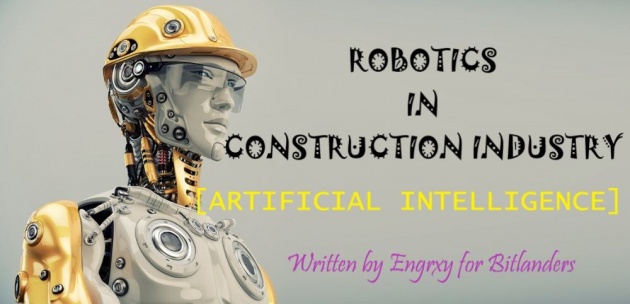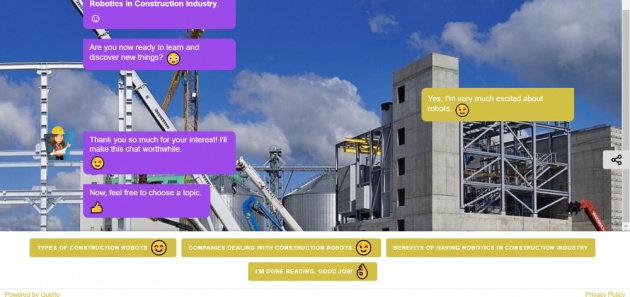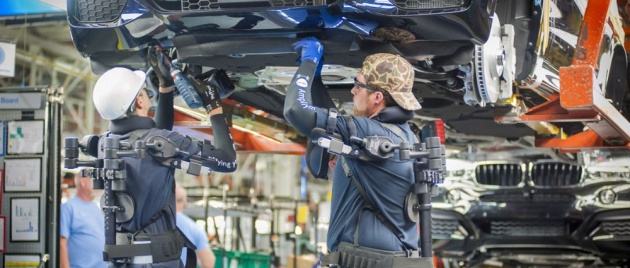
Photo credit: Sumana Rao; modified by Engrxy of Bitlanders
Hello, Bitlanders! I would like to impart to all of you some of the things we did in construction. And this time, let’s get familiar with robots in construction.
Introduction of Robotics in Construction Industry
The introduction of robotics and other technology enhancements is coming to fruition in construction for several reasons. The construction industry continues to grow, offering many opportunities for businesses to increase revenue and generate long-term projects. However, the lack of available workers creates the need for creativity and that includes robotics in construction.
Video Credit: The B1M via YouTube
The late 1970s and 1980s saw a rich period of industry-driven development, particularly in Japan. Facing fears of a labor shortage due to an aging population and younger workers flocking into high-tech industries (fears still relevant today), a number of Japanese companies such as the Shimizu Corporation and the Takenaka Corporation invested in construction automation and robotics to great effect, developing robots and remotely controlled devices used for all sorts of tasks, including material handling, excavation, concrete placement, concrete finishing, rebar placement, fireproofing, structural steel, interior and exterior finishing, earthworks, as well as integrated construction automation systems and prefabricated homes.
While many of these technologies did not end up widely adopted, they successfully adapted techniques from manufacturing into practical construction utilization. Today, improvements in robotics, software, and organization have allowed a new wave of automation in construction to rise, with new developments and collaborations happening across academia, government, and industry.
Source: Autodesk
Automation of processes and systems, increasing the use of technology in everyday tasks, and autonomous machinery seems like a far-fetched fantasy out of a sci-fi film for construction project managers and contractors. Construction contractors are constantly seeking ways to cut costs in several aspects of the business, from construction surety bonds to business management tools.
Automation is changing the face of nearly every industry in the world, but the construction industry may lead the way for robots.
Please feel free to interact with me in this Querlo chat about the types of construction robots, robotic companies, and the benefits of having robotics in construction.
Photo Credit (Background photo of Querlo Chat): wdreblow0 via Pixabay

Screenshot of my new Querlo chat: Engrxy of Bitlanders
Final Thoughts
While there is clear promise of a more efficient way of doing business in construction with the help of technology, there are widespread concerns that the industry will be yet another that reduces available jobs for skilled workers. But experts who follow technology disruption trends all seem to agree that automation in construction will take time to become mainstream and that there will always be a need for a human touch.

Photo Credit: Exoskeleton Report
If you’re worried about robots completely taking over construction work, never fear. Industry experts like Ready-Campbell are adamant that we will continue to need human workers on construction sites.
In the future, I do think we’ll see a lot of autonomous equipment out on job sites, but I also would emphasize that we’ll need plenty of workers, too. People are just much better at improvising and making judgment calls, and that’s critical, especially in the early stages of a product…. As the technology matures, I think robots will perform the bulk of the repetitive work, especially where precision and consistency are important, and humans will focus on the more creative and dynamic parts of the job.
Noah Ready-Campbell
Founder and CEO ofBuilt Robotics
More precise work that requires attention to detail along with project management cannot be completed efficiently at the digital hand of a robot. These jobs will remain an integral component of the construction industry for years to come. Regulations on job site safety, worker safety, and building standards may also take time to adjust to the digital revolution. Overall, the addition of technology in construction has the potential to create a more efficient industry, but not without the individuals who rely on the work to earn a living.
Video Credit: The B1M via YouTube
An ideal way to improve would be to adopt the kind of robotics, automation, and AI solutions. No matter how slowly – slowly but surely.
Thank you for reading. I hope you enjoy the information about robotics in construction as much as I do and learned something out from this blog. See you next blog. Have a great day ahead.
****************************************************************************************************************************************************************************************************************************************************
This blog was made in support to Bitlanders AI-Themed C-Blogging, conversational AI blogging by Querlo powered by IBM Watson and Microsoft Azure.



